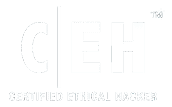Third-party collaboration offers benefits such as increased speed, efficiency, agility, and innovation and is essential for businesses to thrive in the era of everyday innovation. Common examples of third-party support include telecommunications, cloud computing, and managed IT services.
However, third-party collaboration also presents significant security risks. A Ponemon Institute report from January 2020 revealed that 53% of organizations experienced a third-party data breach in the past two years, with an average remediation cost of $7.5 million.
What Is the Third-Party Risk Environment?
In the last half-decade, businesses have substantially increased reliance on third-party vendors, with some organizations even delegating essential operations to external entities to achieve greater efficiencies and cost savings. However, this practice has also led to heightened exposure to significant risks that were previously uncommon. The paramount task for organizations moving forward is to establish proper supervision and monitoring of these third-party vendors to mitigate potential threats before they result in irreparable consequences.
Risks associated with third-party collaboration include strategic, operational, compliance, financial, reputational, and digital risks, among others. Cloud adoption is a major driver of digital risk, with incidents such as data exposures of AWS S3 buckets and the Cloud Hopper attacks demonstrating the vulnerabilities of third-party cloud services. Another example is the SolarWinds Attack, which highlighted the importance of supply chain risk management and the potential for third-party vendors to be targeted by cybercriminals.
According to another Ponemon Institute report, 51% of businesses have experienced a third-party data breach, with 44% of those breaches occurring within the previous 12 months. Of these breaches, 74% resulted from granting excessive privileged access to third parties. Failure to manage third-party risks can lead to regulatory action, financial loss, reputational damage, and impaired business operations.
What is a Third-Party Risk Management Program?
A third-party risk management (TPRM) program is a systematic approach that organizations use to identify, assess, mitigate, and monitor the risks associated with their relationships with third-party vendors, suppliers, and service providers. Third parties can be any external entities that an organization engages with to provide goods, services, or support for its operations. These third parties may have access to sensitive information, systems, or facilities, and their actions can directly impact the organization’s security, compliance, and overall performance. A TPRM program is designed to ensure that third-party relationships are managed to minimize potential risks and maximize the benefits of collaboration.
The first step in a TPRM program is to identify and categorize all third-party relationships. This involves creating an inventory of all the organization’s third parties and classifying them based on factors such as the level of access to sensitive data, the criticality of the services they provide, and the potential impact of a disruption in their services. Once third parties are identified and categorized, the organization conducts risk assessments to evaluate the potential risks associated with each relationship. This assessment may include evaluating the third party’s security controls, compliance with relevant regulations, financial stability, and business continuity plans.
The next step in the TPRM program is to implement risk mitigation strategies based on the results of the risk assessments. This may involve negotiating contractual terms that outline the third party’s responsibilities for security and compliance, implementing technical controls to limit access to sensitive data, and establishing monitoring and reporting mechanisms to track the third party’s performance. Organizations may also develop contingency plans to address potential disruptions in third-party services, such as alternative sourcing options or backup suppliers.
Finally, a TPRM program includes ongoing monitoring and review of third-party relationships. This involves regularly reassessing risks, conducting audits or reviews to verify compliance with contractual terms, and monitoring the third party’s performance against established service level agreements (SLAs). Organizations should also be prepared to respond to incidents or issues in third-party relationships, such as data breaches or service disruptions. An effective TPRM program is dynamic and adaptable, allowing the organization to respond to risk landscape changes and continuously improve its risk management practices.
In general, a third-party risk management program is a critical component of an organization’s overall risk management strategy. It helps organizations proactively manage the risks associated with third-party relationships, protect sensitive information, ensure regulatory compliance, and maintain operational resilience.
How do Third-Party Risk Assessments Support TPRM Programs?
Third-party risk assessments are a fundamental component of third-party risk management (TPRM) programs and play a crucial role in supporting the overall objectives of risk management. Specifically, third-party risk assessments contribute to TPRM programs in the following ways:
- Identifying Risks: Third-party risk assessments help organizations identify potential risks associated with their relationships with third-party vendors, suppliers, and service providers. By evaluating various aspects of third-party operations, such as security controls, data handling practices, regulatory compliance, and business continuity plans, organizations can understand the risks they may be exposed to through their third-party relationships.
- Prioritizing Risks: Risk assessments enable organizations to prioritize risks based on their potential impact and likelihood of occurrence. By categorizing third parties according to the level of risk they pose, organizations can allocate resources more effectively and focus their risk management efforts on the most critical third-party relationships.
- Informing Risk Mitigation Strategies: The findings of third-party risk assessments inform the development and implementation of risk mitigation strategies. For example, if a risk assessment reveals that a third party lacks adequate security controls, the organization may require the third party to implement additional controls or may limit the third party’s access to sensitive data. Risk assessments also inform the negotiation of contractual terms, such as service level agreements (SLAs) and security requirements.
- Supporting Ongoing Monitoring: Third-party risk assessments provide a baseline for the ongoing monitoring of third-party relationships. Organizations can use the results of initial risk assessments to establish key performance indicators (KPIs) and metrics for monitoring third-party performance. Regular reassessments help organizations track changes in third-party risk profiles and ensure that risk mitigation measures remain effective over time.
- Ensuring Regulatory Compliance: Many industries and jurisdictions have regulatory requirements related to third-party risk management. Conducting third-party risk assessments helps organizations demonstrate compliance with these requirements and avoid potential legal and financial penalties.
- Enhancing Decision-Making: Risk assessments provide valuable information that supports decision-making processes. Organizations can use the insights from risk assessments to make informed decisions about entering, continuing, or terminating third-party relationships. Assessments also help organizations identify alternative suppliers or vendors that may pose lower risks.
- Building Trust and Confidence: By conducting thorough risk assessments and demonstrating a commitment to managing third-party risks, organizations can build trust and confidence with stakeholders, including customers, investors, regulators, and employees.
Related article: Risk Mitigation vs Risk Management – What’s the Difference?
What Are the Advantages of Automating Your Third-Party Risk Management Program?
Automation offers significant benefits to organizations in terms of security and efficiency. According to a cybersecurity survey by Graphus, 76% of IT executives believe automation enhances the efficiency of security staff, and security automation can result in cost savings of over 80%. Additionally, 42% of companies attribute their improved cybersecurity posture to security automation. Automation in risk management, particularly in third-party risk assessment, is important for several reasons.
First, automation makes the workload more manageable by reducing the time spent on manual due diligence, allowing teams to proactively prevent threats rather than merely reacting to them. This enables teams to focus on strategic aspects of risk management and prioritize the most critical risks. Automation also streamlines the vendor onboarding process by eliminating the need for manual due diligence checks, resulting in a more efficient third-party risk management lifecycle.
Second, automation accelerates the identification and prioritization of risks, which is a key challenge for risk managers. Automated risk assessments are more objective, data-driven, and rigorous, reducing subjectivity and the potential for human error. The speed and accuracy of automated risk assessments lead to less downtime and cost savings. Furthermore, automation provides a comprehensive view of the entire supply chain, including fourth parties, which is essential for compliance with emerging supply chain risk management regulations.
How Can You Start to Automate Your Third-Party Risk Management Program?
The traditional approaches to third-party risk assessment, which often rely on manual questionnaires and time-consuming due diligence processes, can be resource-intensive and may not provide a comprehensive view of the risks. Organizations are increasingly turning to automation to address these challenges and enhance the effectiveness of third-party risk management. Automation streamlines the risk assessment process, improves accuracy, and enables continuous monitoring of third-party relationships.
Step 1 – Assess vendors using Continuous Threat Exposure Management (CTEM)
CTEM involves comprehensive assessments that include automated asset discovery, external infrastructure assessments, web application security assessments, threat intelligence analysis, dark web findings, and security ratings. This approach goes beyond traditional questionnaires and provides insight into vulnerabilities and the effectiveness of controls. By integrating automated threat exposure assessments with questionnaires, organizations can reduce the time required to assess and onboard new vendors by 33%.
Step 2 – Utilize a Questionnaire Exchange
A questionnaire exchange is a hosted repository of completed standard or custom questionnaires that can be shared with other parties upon approval. Organizations managing multiple questionnaires and vendors responding to multiple questionnaires can benefit from using a questionnaire exchange. When paired with the automation described in Step 1, both parties gain access to verified, up-to-date questionnaires that are automatically validated by continuous assessments. This approach saves time by allowing access to existing questionnaires and facilitating the reuse of new questionnaires upon request.
Step 3 – Combine Threat Exposure Findings with the Questionnaire Exchange:
Relying solely on security ratings or questionnaires is insufficient for third-party risk management. Instead, organizations should use threat exposure management, which combines accurate security ratings from direct assessments with validated questionnaires. Platforms that use both active and passive assessments, rather than just historical open-source intelligence (OSINT) data, provide the most accurate visibility into a third party’s attack surface. The information from these assessments can be used to auto-validate controls in the questionnaire for security and compliance requirements and to identify discrepancies between the client’s responses and the assessment findings. This “trust but verify” approach allows organizations to be quickly notified when third parties become non-compliant with specific technical controls, enabling continuous third-party risk management.
AWA | Let’s Get Your Cybersecurity Up to Speed!
In today’s interconnected business environment, third-party collaboration is essential for achieving increased efficiency, agility, and innovation. However, it also introduces significant security risks that must be proactively managed. By leveraging automation in third-party risk management, organizations can overcome the limitations of traditional manual approaches and gain a more comprehensive and accurate understanding of the risks associated with their third-party relationships. The three-step approach outlined in this article—utilizing CTEM, implementing a Questionnaire Exchange, and continuously combining threat exposure findings with the questionnaire exchange—provides a powerful framework for enhancing third-party risk assessments. Through automation, organizations can streamline the risk assessment process, improve objectivity, and achieve continuous monitoring of third-party relationships. Ultimately, this approach empowers organizations to make informed decisions, build trust with stakeholders, and ensure the security and resilience of their operations in an era of everyday innovation.
Use the form below to start the conversation with our team.







